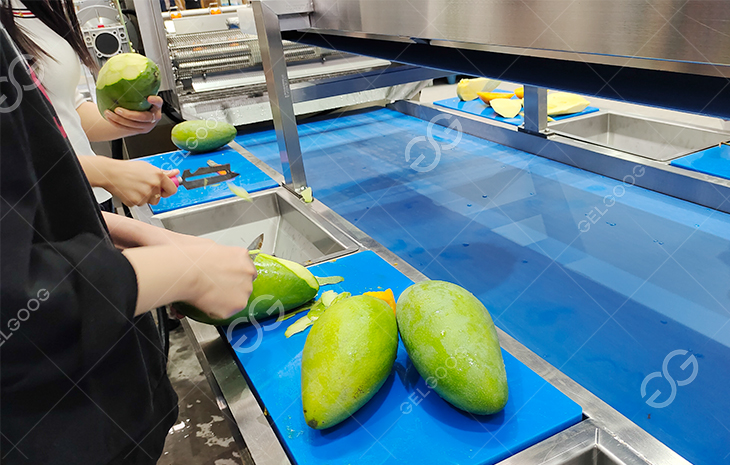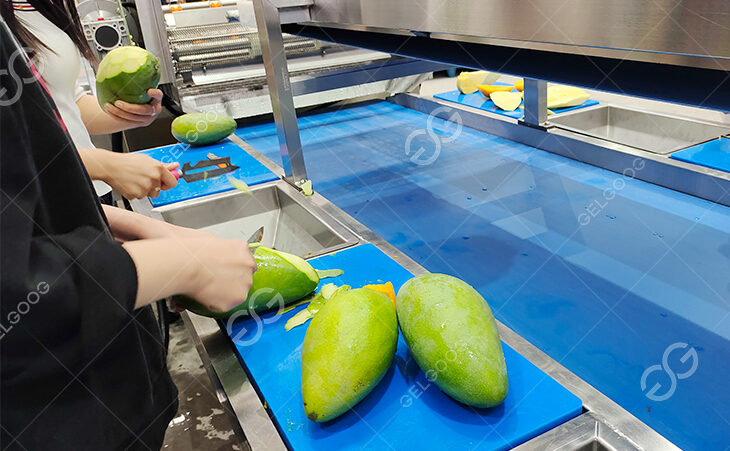Mangoes, often referred to as the “king of fruits,” are renowned for their sweet and tangy flavor. With their rich nutritional profile and versatility, mangoes are widely loved and consumed across the globe. To meet the demands of the market, mango processing factories employ various methods to transform fresh mangoes into a range of delightful products. In this blog post, we will explore the mango processing methods employed by mango factories to bring these succulent fruits from farm to table.
Sorting and Grading:
The first step in mango processing is sorting and grading. Fresh mangoes arrive at the factory in bulk and need to be sorted based on their size, shape, color, and quality. This process ensures that only premium quality mangoes move forward for further processing. Grading helps to categorize the mangoes into different grades based on their characteristics, which in turn determines their final destination.
Washing and Sanitization:
Once sorted, the mangoes undergo a thorough washing process to remove any dirt, debris, or surface impurities. This step is crucial to ensure the hygiene and cleanliness of the mangoes. Special care is taken to use clean water and appropriate sanitizing agents to minimize the risk of contamination.
Peeling and Pitting:
After washing, the mangoes are peeled to remove the skin. This can be done manually or by using automated machinery, depending on the scale of the operation. Once peeled, the mangoes are pitted, which involves removing the stone or seed from the center. This step is essential to prepare the mangoes for further processing and packaging.

Slicing and Dicing:
Once peeled and pitted, the mangoes are sliced or diced according to the desired product. Slices or dices are commonly used in various applications, such as fruit cups, desserts, or toppings. Mangoes can be sliced manually or by using mechanical slicers that ensure uniformity and consistency in the final product.
Preservation and Packaging:
Preservation is a critical step in mango processing to maintain the fruit’s freshness and extend its shelf life. Various methods, such as freezing, canning, or dehydration, are employed depending on the desired end product. Freezing helps to retain the flavor and texture of mangoes, while canning allows for long-term storage. Dehydration involves removing the moisture content, resulting in dried mangoes that are ideal for snacking.
After preservation, the mango products are carefully packaged to maintain their quality. Proper packaging helps protect the mangoes from external factors, such as light, air, and moisture, which can affect their taste, color, and texture. Different packaging materials, such as cans, pouches, or jars, are used based on the specific product requirements.
Quality Control and Testing:
Throughout the processing journey, mango factories implement stringent quality control measures to ensure that only the best products reach consumers. Regular testing and sampling are conducted to assess factors like taste, color, texture, and nutritional content. Any deviations from the desired standards are identified and addressed promptly to maintain product integrity and consumer satisfaction.
Conclusion:
Mango processing in factories involves a series of carefully orchestrated steps to transform fresh mangoes into a wide range of products. From sorting and grading to preservation and packaging, each stage plays a vital role in ensuring the quality, safety, and flavor of mango-based products. By employing these processing methods, mango factories are able to deliver mango delights to consumers worldwide, allowing them to enjoy the delightful taste of this tropical fruit throughout the year.
We are mango processing equipment manufacturers, no matter how you want to process mango, you can contact us, we will provide you with a complete solution.


